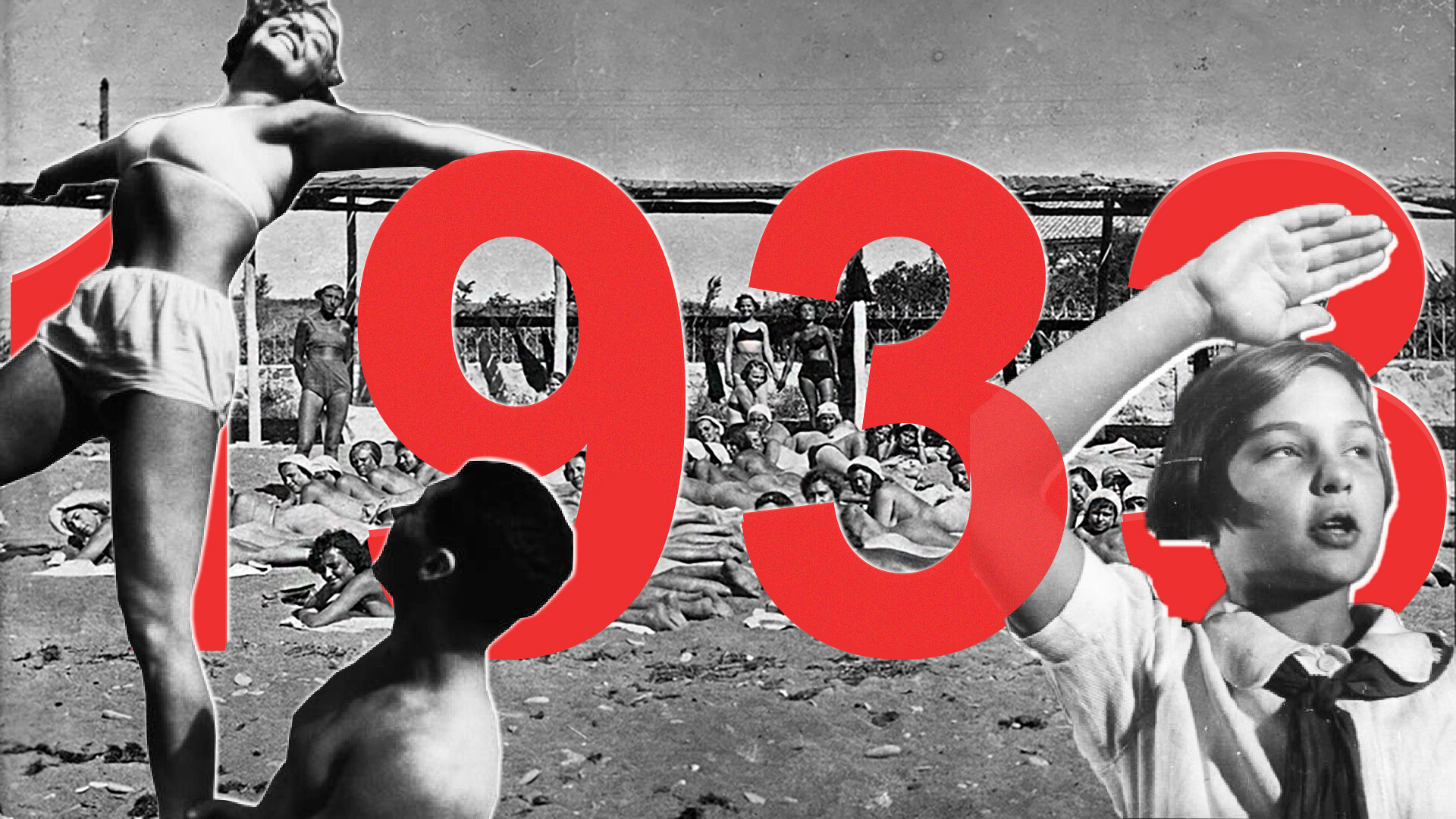
Below, Joseph Stalin and prime minister Vyacheslav Molotov attend the congress of collective farmers.
Foreigners expressed a big interest in knowing how things were going in the Soviet country and many writers visited the USSR to write about this exotic communist land. One of them was Australian Communist Katharine Susannah Prichard, who is pictured below with peasants on a collective farm.
In 1933, the ambitious construction of the White Sea–Baltic Canal (Belomorkanal) was finished and it was ceremonially opened.
It took less than two years to build the 227 km (!) canal that connected the White Sea and the Baltic Sea.
The dark side of Belomorkanal is that its forced construction was provided by Gulag prisoners.
And the construction took the lives of about 12 thousand prisoners.
In general, the year 1933 was marked by the launching of several big industrial projects and steel plants all over the country. And photographers were amazed by this industrial “poetry”.
In 1933, Soviet authorities popularized the automobile movement and driving and the AVTODOR society initiated a massive car rally, which went all across the USSR.
The sexual revolution that happened in the early Soviet era was already over and the USSR was turning into a prudish country. However, a naked body was still a normal thing. People were easily sunbathing nude.
And the most famous Soviet actress of that time was half-naked while filming the Soviet first musical, ‘Moscow Laughs’, which was released the following year.
Soviet propaganda was promoting a healthy athletic body and lifestyle - so that young people would be proper builders of Communism.
Below are socialist mottos about industry and cotton culture in the Uzbek SSR written in Uzbek language.
The year 1933 was the very last in which Muscovites could see the Sukharev Tower. The very next year, it was demolished according to Stalin’s plan for the reconstruction of Moscow.
In 1933, the Moscow Metro began to be constructed. Many places of the tunnel were built with a “cut-and-cover” method, when a trench is excavated and then roofed over. The metro builder became a prestigious job and many people wanted to join the historical process.
In the 1930s, pilots developed a passion for flying into the stratosphere. Pictured below is a crew of the USSR-1, a record-breaking high-altitude balloon.
In the 1930s, the Soviet authorities, famous for their antireligious policies, started anti-Buddhist and anti-Muslim campaigns, alongside with fighting the Orthodox clergy. Thus, by the end of the 1930s, most of the clergy would be repressed, while temples, sacred images and books would be destroyed. Pictured below are Buddhist monks in Buryatia.
Below are actors of the Stanislavsky Opera Theater in Moscow while reading the libretto in the courtyard of the theater. Legendary Konstantin Stanislavsky is pictured in the center, in a hat.
By 1933, the construction of the People’s Commissariat for Agriculture building was over. It was designed by Aleksey Shchusev in constructivist style and remains a monument of Soviet architecture. Watching the angle the photographer took to capture it, we can imagine how unusual and innovative its forms and shapes were.
Soviet authorities launched many periodic issues for different types of people, including peasants and workers. And they required a lot of correspondents, so many people joined the profession. Pictured below are peasant correspondents listening to their idol, main proletarian writer Maxim Gorky.
More and more people gained access to photography. Cameras were not as heavy as they were before, so lots of both professional and amateur photographers made incredible snapshots of the Soviet life.
One of the most iconic photographers of the era was Alexander Rodchenko. He was a pioneer in avant-garde photography. He is pictured below while documenting the work on the Belomorkanal.
Below, children try to fix their radio.
An Uzbek machine operator posing.
Peasant boys boating in Karelia.
A peasant of a ‘kolkhoz’ collective farm with grain he earned per workday.
A spinner working in a village.
Babushka, mother and kids posing - three generations portrayed together in a village.
Women working for collective production.
Labor Day demonstrations.
A peasant market.
A pharmacy.
The pioneer’s greeting.
A worker in a mechanics workshop.
Dear readers,
Our website and social media accounts are under threat of being restricted or banned, due to the current circumstances. So, to keep up with our latest content, simply do the following:
If using any of Russia Beyond's content, partly or in full, always provide an active hyperlink to the original material.
Subscribe
to our newsletter!
Get the week's best stories straight to your inbox